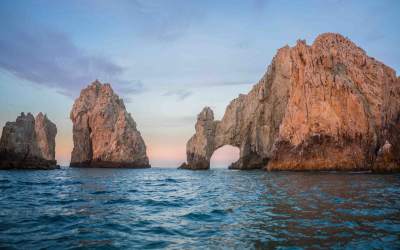While the resorts, hotels, bars, restaurants and nightclubs that have made Los Cabos a world-famous holiday hotspot in recent years, the destination itself has been around for hundreds of years. From pirate haven to luxurious US presidents’ vacation choice, Los Cabos’ many historical forms have shaped the destination you can see today. If you’re a history buff who likes to lounge, there are plenty of attractions, historic sites and museums that you can fill your day with between poolside Margaritas and spa treatments.
San Jose Del Cabo
For centuries before there was any permanent European settlement, the indigenous Pericu people lived in the area around what is now Los Cabos. In the early 1500s, as Europeans started to venture further westward, the Spanish looked to find ways to bring treasures back from the Philippines with huge galleon ships sailing around the Americas before travelling west across the Pacific Ocean to reach Asia. The fresh water from the River at San Jose was the last chance to stock up before the huge ocean crossing, and treasure ships could often be found here topping up. But where there is treasure, there be pirates! Privateers like Francis Drake would hide in the waters around The Arch to ambush the Spanish galleons, sinking them and taking their haul. While there are thankfully far less pirates here now, you can get a tongue-in-cheek taste of the pirate life on the family-friendly Bucaneer Queen cruise. It makes you wonder: who drank more rum, today’s tourists or the privateers of yester-year?

Mission San Jose Del Cabo
Like many cities and towns along the western coast of Mexico and the United States, San Jose Del Cabo can trace a lot of its history back to a Catholic mission set up by the Kingdom of Spain. Initially established in 1730 on the banks of the San Jose River, the mission moved numerous times, and, after an uprising from the local indigenous population, it was re-established by the coast, alongside a presidio (a Spanish fort) in an effort to control the population. The mission building had a central role in the Battle of San Jose Del Cabo during the Mexican-American war in 1847, serving as a fortress for American troops during a siege. The mission was closed officially in 1840, but the site of the mission church is still central to the architecture and character of San Jose del Cabo, and plays a big role in the artistic and cultural flavour that oozes out of the town, especially during the ArtWalk evenings!

La Paz
La Paz, the capital city of the state of Baja California Sur, is only a short drive up the highway from San Jose Del Cabo, and has some of the best snorkelling and scuba opportunities in the region – especially if you want to swim with whale sharks. Its history is often linked with the sea on which it is located, the Sea of Cortes (aka the Gulf of California). Named for Hernan Cortes, who led the conquistadors to conquer the Aztec capital which would become Mexico City, the sea extends all the way along the eastern side of the Baja California Peninsula. Cortes explored the area in the early 1500s, towards the end of his life, and unsuccessfully attempted to establish a settlement in La Paz. The bay was occupied on and off by European settlers throughout the following centuries, and it was finally settled in 1811 to harvest pearls in the surrounding waters.

One & Only Palmilla
Built originally in 1956 by the son of a Mexican President, the Palmilla was one of the first major resorts in Los Cabos, and set the tone for drawing in prestigious and glamourous Hollywood A-lister guests. John Wayne and Lucile Ball both came to the resort in the earliest days, and former US President Dwight Eisenhower was attracted by the deep sea fishing in the adjacent sea. The resort offered privacy to these guests who were looking to escape the spotlight of Tinseltown, and the fantastic weather, beaches and world-class Palmilla golf course didn’t hurt either. The Palmilla was acquired by One & Only in 2004, and they have continued to offer an A-list level of service and amenities.


